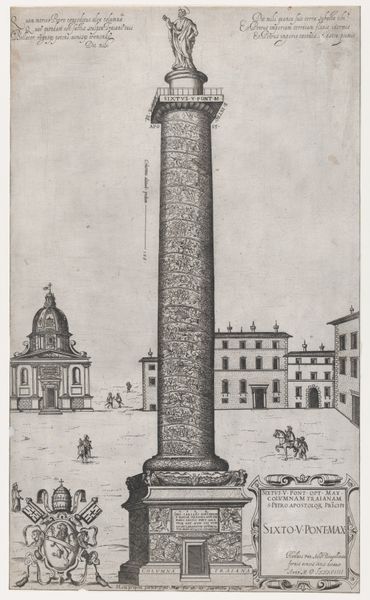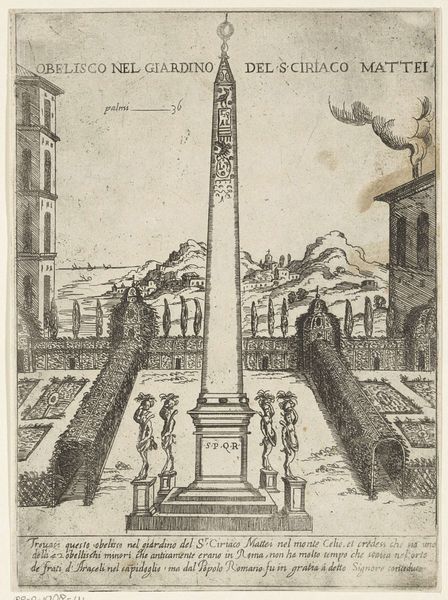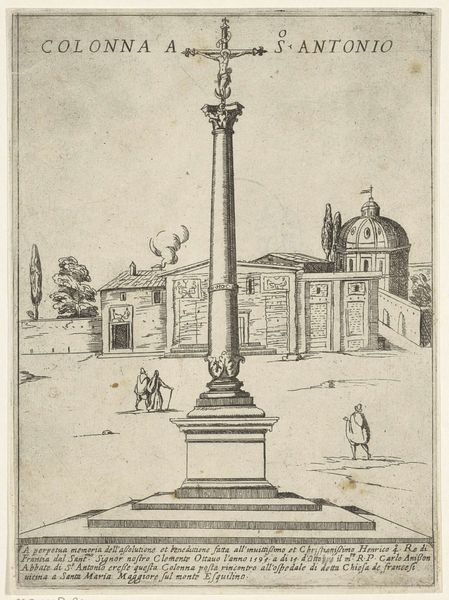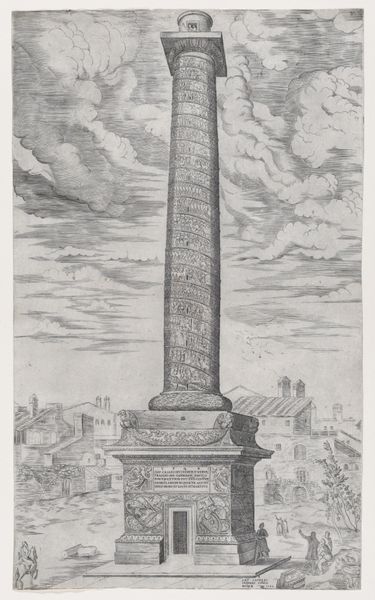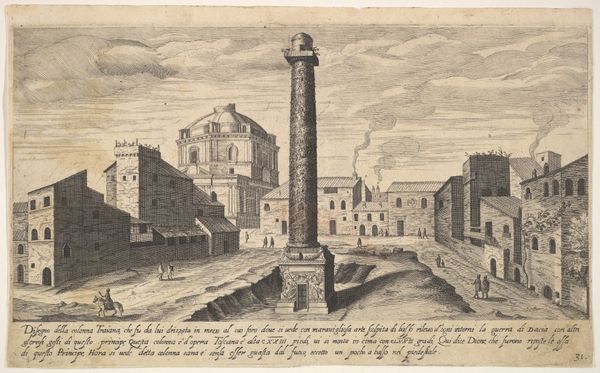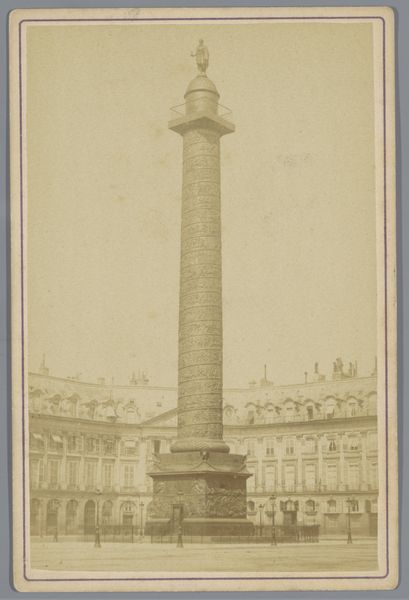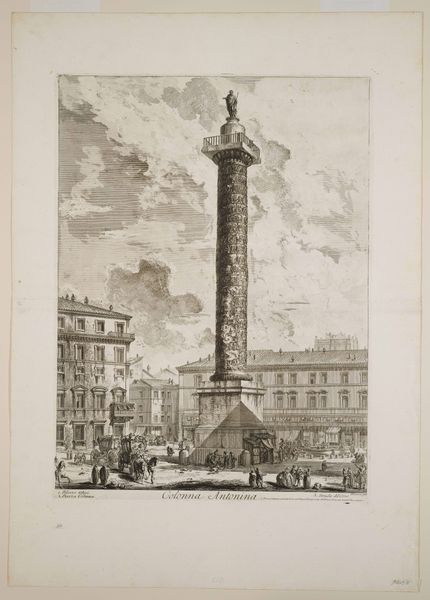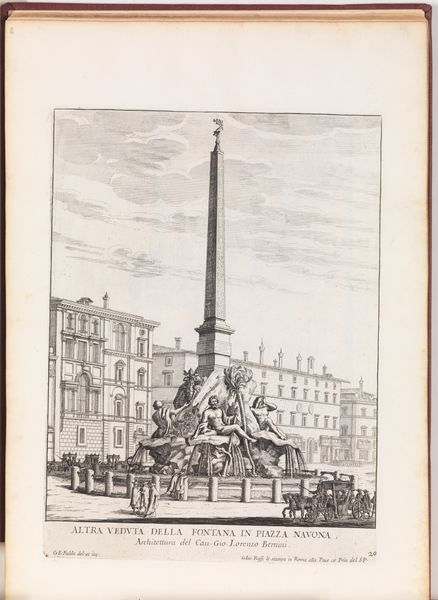
Speculum Romanae Magnificentiae: The Antonine Column 1589
0:00
0:00
drawing, print, engraving, architecture
#
drawing
# print
#
romanesque
#
cityscape
#
history-painting
#
engraving
#
architecture
Dimensions: sheet: 20 7/8 x 12 3/8 in. (53 x 31.5 cm)
Copyright: Public Domain
Curator: This engraving, created in 1589, reproduces the Antonine Column from the series "Speculum Romanae Magnificentiae." It offers us a glimpse into Rome's grandeur, captured through meticulous lines. Editor: It does have a certain monumentality even in miniature, doesn’t it? Though seeing the city beyond makes me think of a stage set, figures and carriages carefully placed around this giant column. Curator: I think that captures the intention of the series. "Speculum Romanae Magnificentiae" translates to "Mirror of Roman Magnificence," presenting Rome's wonders as a spectacle for those who couldn’t travel there. The anonymous engraver, working from other sources, painstakingly recreated this landmark. Editor: Makes you think about the labor that went into producing both the column itself, and these prints circulating its image! Consider the extraction and shaping of the stone, not to mention the artistry of the engravings, and the distribution through printmaking, each step involving its own social network and labor dynamic. Curator: Absolutely, there is an amazing transfer of skill that went into producing and sharing this image! The spiral narrative winding up the column itself depicts Marcus Aurelius’s campaigns, a kind of visual history lesson ascending toward the heavens. Do you think it inspires awe, as intended? Editor: Well, perhaps a calculated awe. The text around the base is quite interesting – seems it had some 'updates' through the years, literally inscribing power and religiosity, the way cultural and material things tend to accrue meaning over time. Curator: Precisely, these inscriptions highlight the column's appropriation by the Catholic Church; Sixtus V replaced a statue of Marcus Aurelius with one of Saint Paul. It reveals how history is actively reshaped through material intervention. Editor: Thinking about these engravings as historical documents of material objects, these images participated in an economy and demonstrate not only artistic but social and ideological intent through mass media – I find this even more captivating than the Column itself! Curator: It does add so much when we consider all of those facets! Now when I see it I notice much more than its form. Editor: Exactly, bringing us to understand how the lives of both image and artifact live far beyond a moment.
Comments
No comments
Be the first to comment and join the conversation on the ultimate creative platform.
